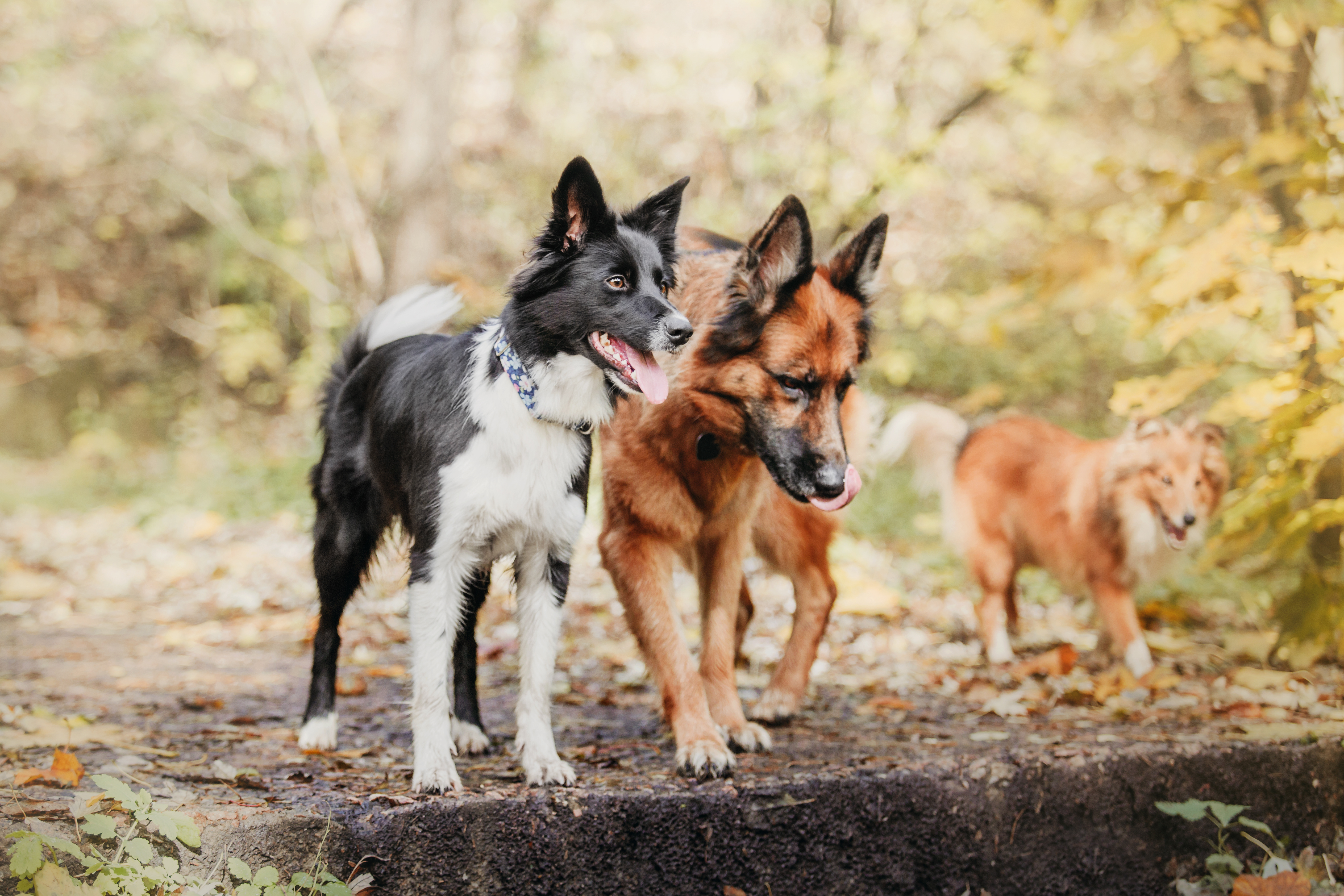The Secret Language of Dogs: 10 Insights Into Tail Wagging
The wagging tail of a dog is a universally recognized symbol of canine communication, yet few truly understand the depth and complexity behind this seemingly simple gesture. For centuries, humans have shared their lives with dogs, forming bonds built on mutual affection and companionship. However, the subtleties of canine communication often remain a mystery to even the most devoted dog lovers. This article seeks to decode the secret language of dog tail wagging, unveiling insights that can deepen our understanding and enhance our relationships with our four-legged friends. As we embark on this exploration, we will delve into the anatomy of the tail, the variety of wagging styles, and the emotions they convey, ultimately aiming to equip every canine enthusiast with the ability to interpret these signals accurately.
1. Anatomy of a Tail: More Than Meets the Eye

A dog's tail is a remarkable structure, both in its physical composition and its communicative potential. Comprising vertebrae, muscles, nerves, and blood vessels, the tail is an extension of the spine, designed for agility and expression. The positioning of the tail is controlled by a complex network of muscles, allowing for a wide range of movements. Each breed of dog has a uniquely shaped tail, from the tightly curled tails of Pugs to the long, sweeping tails of Golden Retrievers. This diversity in form contributes to the nuances of wagging, as different tail shapes can influence the visibility and interpretation of a wag. Understanding the anatomy of a dog's tail is the first step in decoding its messages, as the physical capabilities of the tail can affect how a dog communicates its feelings.
2. The Evolutionary Purpose of Tail Wagging

Tail wagging is not merely a byproduct of domestication but a behavior rooted in the evolutionary history of canids. Wolves, the ancestors of domestic dogs, use tail movements as part of their social interactions within the pack. A wagging tail can signal submission, friendliness, or alertness, helping to maintain social order and cohesion. As dogs evolved alongside humans, these tail signals adapted to convey messages not only to other dogs but also to people. The domestication process has refined these signals, allowing dogs to communicate effectively with humans, who have become their primary companions. By examining the evolutionary origins of tail wagging, we gain insight into how this behavior has been shaped by both natural and artificial selection, resulting in the rich communicative repertoire observed in modern dogs.
3. Different Wagging Styles: Decoding the Variations

Not all tail wags are created equal; the style and speed of a wag can convey a wide range of emotions and intentions. A slow, deliberate wag might indicate uncertainty or caution, while a fast, broad wag often signals excitement and happiness. The height at which a tail is held during wagging also provides clues to a dog's emotional state. A high-held tail can denote confidence or alertness, whereas a low-held tail might suggest submission or fear. Additionally, a wag that favors one side over the other can reveal a dog's feelings towards a specific person or situation, as research suggests that asymmetrical wagging is linked to emotional processing in the brain. By learning to recognize and interpret these variations, dog owners can better understand their pets' emotional cues and respond appropriately.
4. Emotional Spectrum: What Tails Tell Us About Feelings

The tail is an emotional barometer, reflecting a dog's inner state with remarkable accuracy. Joy, fear, aggression, and curiosity are just a few of the emotions that can be expressed through tail movements. A wagging tail does not always mean a dog is happy; it can also indicate anxiety or aggression, depending on the context and accompanying body language. For instance, a dog with a stiff body and a wagging tail held high might be displaying aggression or dominance, while a relaxed body and a wagging tail held low could indicate contentment. Understanding the emotional spectrum of tail wagging requires careful observation of the entire dog, as the tail is just one component of a complex system of non-verbal communication.
5. Breed-Specific Tail Signals: The Importance of Context

Different dog breeds have distinct tail characteristics that can influence how their wagging is perceived. For example, a Greyhound's long, slender tail may communicate differently than a Bulldog's short, curled tail. Breed-specific traits such as tail length, curl, and thickness can affect the visibility and interpretation of a wag. Additionally, some breeds have tails that are naturally docked or bobbed, which can limit their ability to communicate through wagging. Understanding the breed-specific nuances of tail wagging is crucial for accurately interpreting a dog's signals. By considering the breed context, dog owners can avoid misinterpretations and better appreciate the unique ways in which different dogs express themselves.
6. Tail Wagging and Social Interactions: Canine Conversations

In the world of dogs, tail wagging plays a crucial role in social interactions. Dogs use their tails to convey intentions and emotions to other dogs, facilitating communication and reducing the likelihood of conflict. A wagging tail can serve as a friendly greeting, an invitation to play, or a signal of submission. In multi-dog households or social settings, understanding the dynamics of tail wagging can help owners manage interactions and prevent misunderstandings. Observing how dogs respond to each other's tail signals provides valuable insights into their social behavior and can aid in fostering harmonious relationships among canine companions.
7. The Human-Dog Connection: Interpreting Tail Wagging

Humans have a unique ability to interpret canine body language, including tail wagging, thanks to thousands of years of co-evolution. While dogs have adapted their communication to suit human companions, people have developed an intuitive understanding of canine signals. However, misinterpretations still occur, often due to a lack of awareness or knowledge about the subtleties of tail wagging. By educating themselves on the nuances of tail signals, dog owners can strengthen their bond with their pets and enhance their ability to respond to their needs. This mutual understanding fosters a deeper connection between humans and dogs, enriching the lives of both species.
8. Misconceptions and Myths: Debunking Common Beliefs

Despite widespread familiarity with the concept of tail wagging, several misconceptions persist. One common myth is that a wagging tail always indicates a friendly dog, which can lead to dangerous misunderstandings. Another misconception is that all dogs wag their tails in the same way, disregarding breed-specific differences and individual personalities. By debunking these myths and providing accurate information, this article aims to equip readers with the knowledge needed to interpret tail wagging correctly. Understanding the reality behind these misconceptions can prevent potential conflicts and enhance the relationship between dogs and their owners.
9. Training and Tail Wagging: Using Signals for Better Communication

Tail wagging can be a valuable tool in training and behavior modification, as it provides insight into a dog's emotional state and readiness to learn. By observing a dog's tail movements, trainers can gauge the effectiveness of their techniques and adjust their approach accordingly. Positive reinforcement methods that align with a dog's emotional cues can enhance learning and strengthen the bond between trainer and dog. Additionally, teaching dogs to recognize and respond to human gestures and signals can improve communication and cooperation. Incorporating an understanding of tail wagging into training practices can lead to more effective and harmonious interactions between dogs and their handlers.
10. The Future of Canine Communication: Research and Innovations

Advancements in technology and research continue to shed light on the complexities of canine communication, including tail wagging. Studies using motion capture and artificial intelligence are providing new insights into the nuances of tail movements and their meanings. These innovations have the potential to revolutionize our understanding of dog behavior and improve the ways in which we interact with our pets. As research progresses, we may develop new tools and techniques for interpreting and responding to canine signals, further enhancing the human-dog relationship. The future of canine communication holds exciting possibilities, promising to deepen our connection with our beloved companions.
Embracing the Language of Tails

The secret language of dog tail wagging is a fascinating and intricate system of communication that offers a window into the emotional world of our canine companions. By decoding the signals conveyed through tail movements, dog enthusiasts can gain a deeper understanding of their pets and foster more meaningful relationships. This article has explored the anatomy, evolution, and emotional spectrum of tail wagging, as well as the importance of context and breed-specific signals. By embracing this knowledge, dog owners can enhance their ability to communicate with their pets, creating a harmonious and enriching partnership. As we continue to learn and grow alongside our dogs, the language of tails will remain a vital and cherished aspect of the human-canine bond.







